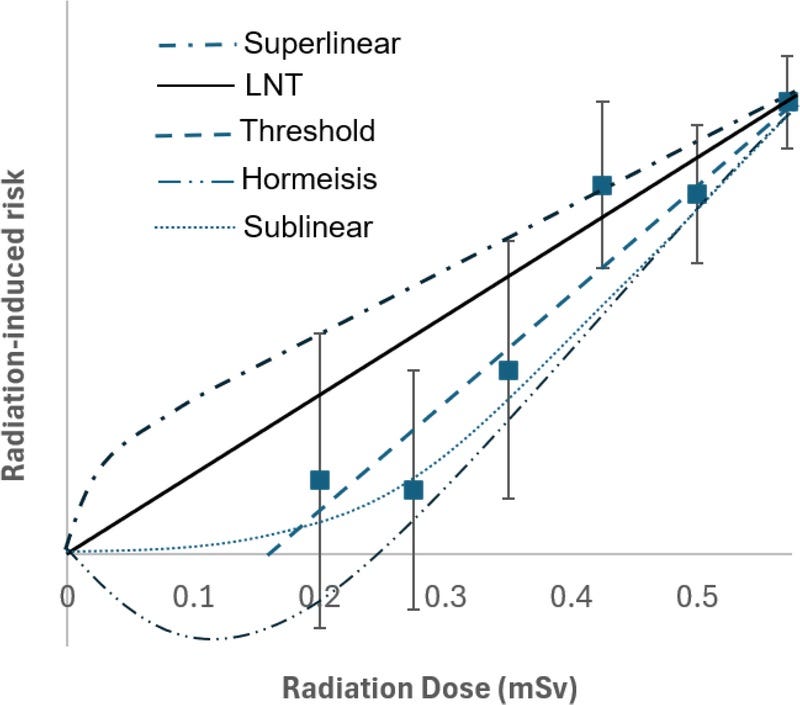Robert Hayes PhD just published a prescient and paradoxical breakthrough with the Health Physics Society.
I’ve worked and travelled with Dr. Hayes over the past two years through the U.S. Department of Energy’s Consolidated Interim Storage initiative, funded by the Office of Nuclear Energy.
I recall when he first shared the concept behind this paper in late 2023, drawing connections across literature on human stress biology like cortisol levels, immune suppression, and psychosomatic illness, looking for evidence that chronic psychological stress, specifically radiophobia, could be biasing our interpretation of radiation risk. My gut told me he was onto something...
In the publication released last week, Dr. Hayes confirms what he suspected: radiophobia is distinct from any radiogenic effect, yet it appears in the same datasets we use to evaluate radiation risk. In populations exposed to low levels of radiation, below thresholds known to cause biological harm, the fear of exposure itself emerges as the primary health risk.
For decades, radiation risk has been modeled through the linear no-threshold (LNT) assumption, which treats all doses as linearly proportional to cancer risk, no matter how small. Hayes challenges us to separate biological causation from psychosomatic influence.
Just as epidemiology accounts for confounding variables like smoking, alcohol use, and occupational hazards, Hayes argues it is rational and necessary to do the same for chronic stress induced by radiological fear.
Well done, Dr. Hayes. This is a win for human and planetary health.
Indeed, it’s remarkable to watch modern science return to the Occam’s Razor of nuclear energy. After all this fear, it turns out that the most dangerous nuclear plant is the one that is never built. With seventy years of stellar operational data behind us, scientific consensus around the potential of our energy systems has been revealed.
Most know that the true barriers to scaled deployment of proven fission technology are no longer technical but the intersection of public trust, skilled trades, and supply chains.
This prescient publication reminds me of a quote from another radiological pioneer over 90 years ago. “Nothing in life is to be feared, it is only to be understood. Now is the time to understand more, so that we may fear less.”
— Marie Curie, 1930s
Free Access to the paper here through funding from Department of Energy: https://journals.lww.com/health-physics/fulltext/9900/psychosomatic_bias_in_low_dose_radiation.254.aspx





Thank you Ryan for sharing this. 23 year nuke worker here that had some doubts about working with radiation when I first started. I did a lot of reading, Atomic Accidents by James Mahaffey and Revision 1 of the USNRC Regulatory Guide 8.29, which put my mind at ease. There are a lot more safety concerns in a nuclear power plant with heat stress, working at heights and confined spaces than there are working with dose. We are bombarded with dose everyday in our normal lives. ALARA is a huge cost to bear.
Thank you for this excellent article and the link to Dr. Hayes' paper, Ryan. You make clear the reasons why regulatory changes (or adjustments) are needed...and make the case eloquently, if I may say so. I'm saving your article as an illuminating contribution to the body of evidence that overwhelmingly supports the beneficial uses of nuclear energy.